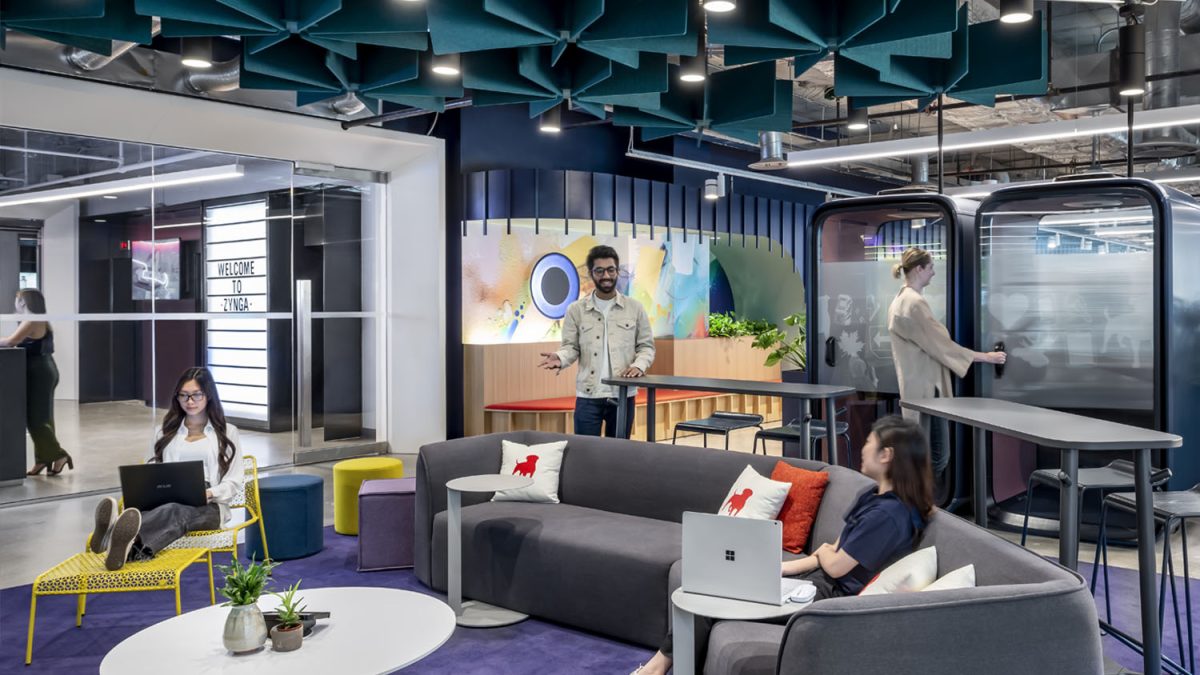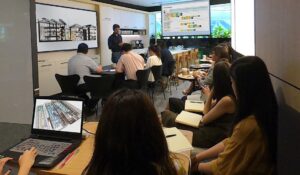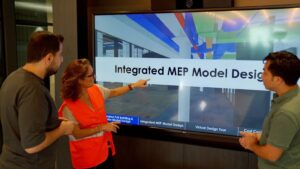The need to reduce workplace distractions along with creating areas for focused work, is more critical than ever.
Designing spaces that minimize distractions and cater to high-concentration activities is seen by many as essential. These focused environments are very useful in supporting the cognitive demands of modern work. This not only includes places where one can do their work free of interruptions and noise but also places where one can make a call or have a conversation without causing distraction.
The solutions I see designers incorporating include quiet zones, soundproof meeting areas and private work pods, often as unbookable spots around the workplace. They are so popular that the biggest problem seems to have been that colleagues want to “camp out” in them and lay claim to those precious few quiet spaces.
This has me wondering, is there a return to smaller enclosed offices, even if they consume more space per person than desks in an open plan, for balancing the deep focus needs of individuals? And is this approach a part of the emergent hybrid working norms? What do you think?
Here are reported findings from a few sources with links below in the comments to the sources.
- Common Distractions: The most prevalent distractions include emails (26%), phone calls and texts (55%), co-workers (27%), and the Internet (41%). It’s noteworthy that 98% of people report being interrupted at least 3-4 times a day, and about half even more frequently.
- Impact on Productivity: On average, workers lose 2.1 hours per day due to distractions, which equates to nearly 25% of an 8-hour workday. This loss in productivity is significant, as it translates to around 60 hours wasted per month per employee.
- Time to Refocus: After being interrupted, it takes an employee about 23 minutes to fully regain focus. This prolonged recovery time can be as costly as the distraction itself, significantly impacting productivity.
- Effects on Mental Health: Distractions can double the chance of making errors at work and contribute to stress and anxiety. About 18 million Americans suffer from anxiety in the workplace, with 50% of employees believing that stress or anxiety prevents them from performing their jobs to the required standard.
- Noise and Meetings as Distractions: Noise distractions cause a 66% drop in productivity, and 34% of employees blame lack of focus on excessive noise. Additionally, meetings are seen as major distractions, with 60% of people viewing them as such, interrupting their work and preventing task completion.
- Social Media and Email: 31% of employees feel that checking social media is their biggest distraction at work. Furthermore, 7 out of 10 employees say that emails have a detrimental effect on their work quality.
- Financial Implications: Distractions cost U.S. businesses approximately $650 billion annually. This monumental economic impact highlights the urgent need for businesses to address and mitigate workplace distractions.
- Technology and Instant Messaging: 83% of workers use instant messaging tools at work, and 70% report being frequently interrupted by them. Cell phones account for 55% of lost work productivity, emphasizing the need for strategies to manage digital distractions.
These statistics underscore the significant impact of distractions in the workplace, both in terms of productivity loss and mental health concerns, and highlight the importance of strategies to mitigate these distractions
Of course, simple good manners or rules when working around others is part of the mix, but apart from working out of office (which definitely has its own unique distractions), I’d like to know your thoughts on how optimal workplace design can solve some of these issues.

Sources of statistics:
- Business DIT Workplace distractions statistics and trends Sept. 2023
https://www.businessdit.com/distraction-work-statistics/ - Teamstage workplace distractions Statistics; problems and solutions 2023
https://teamstage.io/workplace-distractions-statistics/ - ZIPDO Essential Workplace Distractions statistics 2024
https://zipdo.co/statistics/workplace-distractions/




